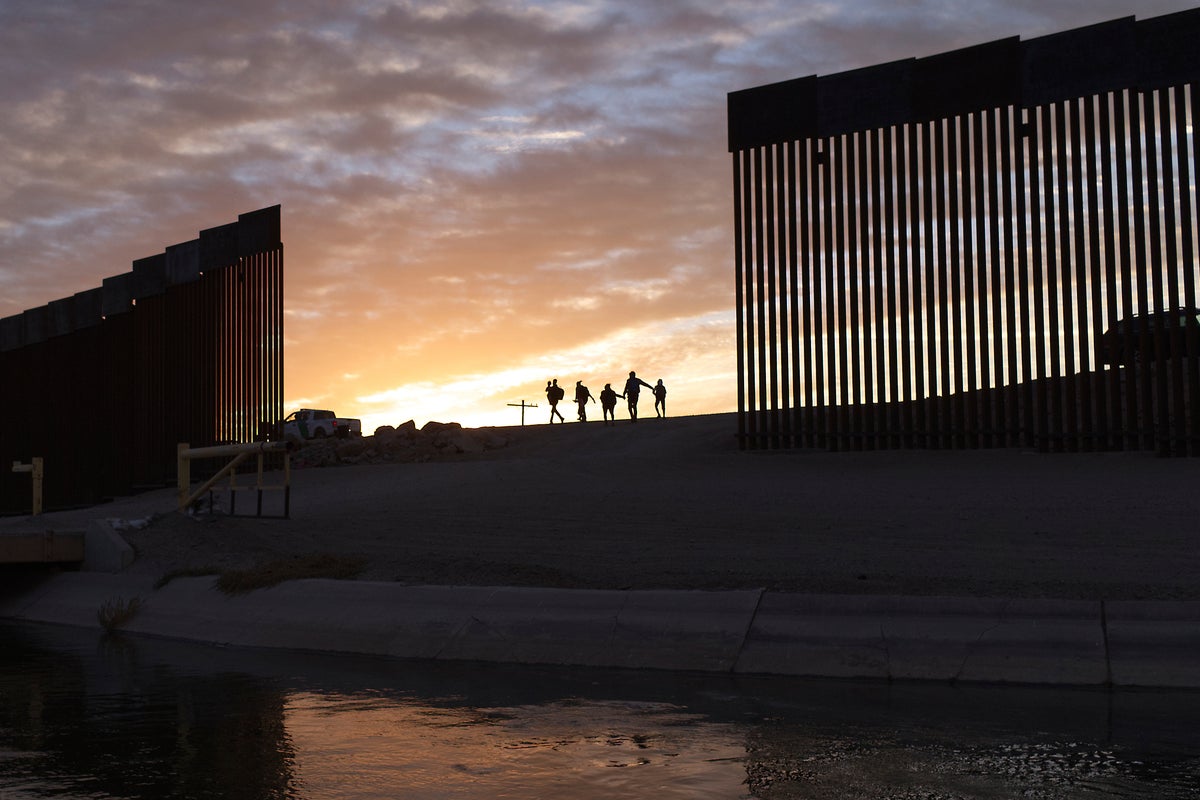
Despite his promise that "not another foot" of border wall would be constructed under his administration, Joe Biden has authorised a plan to fill a gap in the barricade just south of Yuma, Arizona.
According to data from the Department of Homeland Security, four large gaps in that section of wall have made it one of the most used corridors for illegal crossings into the US by migrants.
The DHS under Mr Biden issued a statement saying that completing the wall would actually protect migrants who could become injured trying to scramble up the slops near the wall or drown while crossing the Colorado River.
Senator Mark Kelly of Arizona, a Democrat, has pushed for Mr Biden to authorize the gap to be closed. According to the Associated Press, Mr Kelly has said the gaps have been a challenge for officials trying to secure the southern border.
Myles Traphagen, an environmentalist in Arizona who has been mapping the ecological damage caused by the border wall construction, believes that closing up the wall will not provide much of a deterrent to migrants trying to cross the border.
According to him, the Yuma area has "become the new Ellis Island for Arizona”, with people arriving there from countries as disparate as Ethiopia, Cuba, Russia, Ukraine, India, Colombia, and Nicaragua.
“People have traveled half way around the globe on planes, trains and automobiles,” he said, “so to expect that closing four small gaps is going to make them turn around and book a return flight on Air Ethiopia is sheer fallacy.”
While it may not stop crossings, it is also true that the area is dangerous. On 6 June a 5-year-old girl drowned while trying to cross with a group. She became seperated from her mother and disappeared beneath the water. Her body was eventually discovered elsewhere in the river.
While US officials did not confirm the girl's identity or nationality, Jamaican newspapers have reported she was from that country.
Officials said they plan to move "as expeditiously as possible" to fill the gaps, though no official word on a start date for construction has been announced.
While Mr Biden moves to fill one set of gaps, environmental groups have called for the removal of wall sections in other regions, citing the ecological damage they cause.
According to environmentalists, the walls in some regions hurt wildlife populations of bobcats, javelinas, and mule deer.
Mr Traphagen's group is calling for native foliage to be replanted in portions of the borderlands that were stripped during the construction of the wall, and for the widening of the spaces between the steel bars to allow more wildlife to pass through.
His group also wants to see 180 miles (290km) of razor wire that was installed along pedestrian bollard fencing, citing its potential threat to humans and wildlife.







